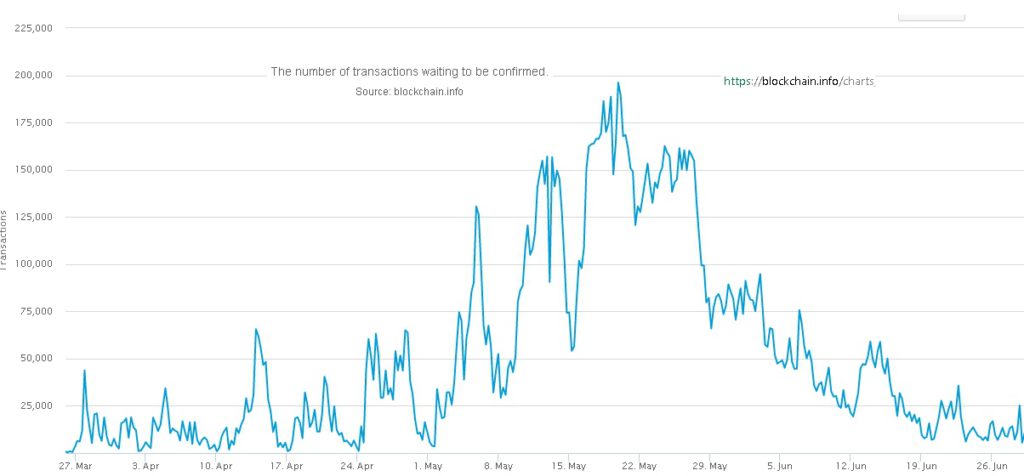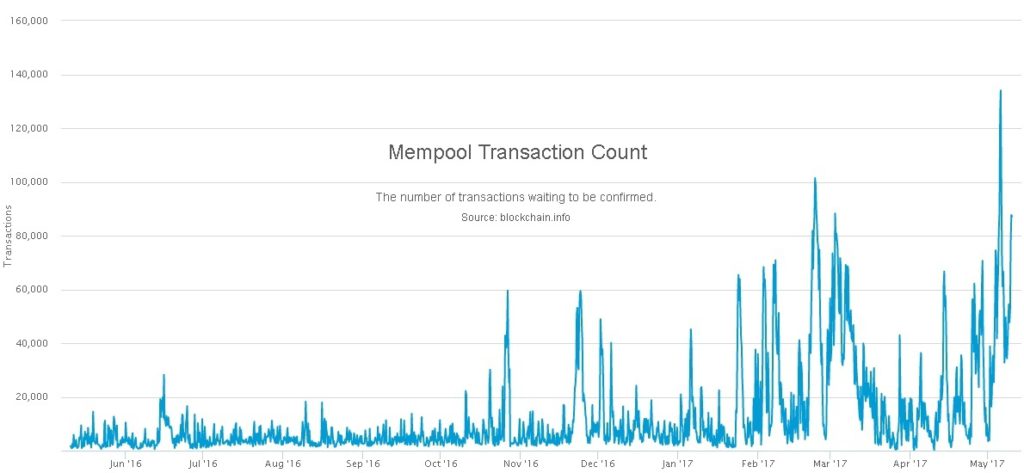After 1 month of acute crisis the bitcoin network is finally operating more or less normally. Imagine that you went to a station in rush hour and it took you 1 month to get home due tube or rail network jamming. This is exactly what happened to bitcoin in the last 2-3 months, and which is shown on this graph:

This is simply network saturation due to increasing demand and activity, rather than spamming as reported by some.
For example on 8 May 2017 I have created a sample transaction for about 600 USD, not a small amount, and using a standard Android app with default settings. This transaction tool exactly 1 month to be approved by the bitcoin network. The graph shows that millions of other transactions have known a similar sort and a lot of bitcoin users have seen their transactions delayed (for days and weeks). Moreover, on some days blockchain.info even forgot about this transaction which he knew about on previous day. This means that maybe the backlog was higher than the curve above shows as clearly blockchain.info does not or did not record the bitcoin transactions accurately.
So it SEEMS that bitcoin has recovered?
This comes at INCREDIBLY high cost. During same last 3 months period the bitcoin dominance went down from 80% down to 40%. This is like losing 40 Billion dollars of business revenue at today’s prices!!! Bitcoin has lost half of its business in less than 3 months!
All this is of course self-inflicted damage because the reforms which were already in “final testing stage” (!) 1 year earlier are not quite yet implemented.






